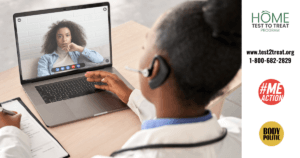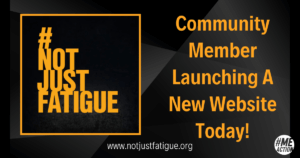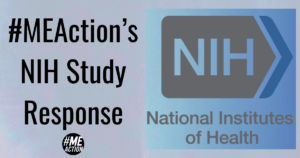Ryan Prior first made waves with his article in USA Today about his experience with ME/CFS that was shared over 2,000 times. He spoke of, as a junior in high school, falling so ill he could no longer attend classes. “I saw about 20 different doctors that year from every specialty you can imagine,” he wrote. His article brought in so much feedback from others who had been isolated from the disease, Prior decided he couldn’t ignore his access to a platform to share their stories and advocate. “There is no way I can ignore these facts knowing I have access to a national platform and have the skills to tell the story of these unheard voices,” he wrote in a second article.
That was three years ago. Prior still works voluntarily to advocate for patients and educate the medical community. Here he talks about his journey, looking back on how sharing his story created not only a movie, Forgotten Plague, but a movement.
What was your vision for the film and the Blue Ribbon Foundation from the beginning?
I don’t think I had any idea what it really meant to make a documentary when Nicole and I first started. But I’d written for some major news outlets and Nicole was a filmmaker. It seemed possible.
A few months after graduating from college, I reached out to major journalists in this space to cover our Kickstarter campaign. Soon, I sat in a Walmart parking lot in rural Georgia because I couldn’t cell coverage at home. I was speaking to Llewellyn King.
I had seen the documentary “Invisible Children” and how it had evolved into a global NGO. I thought that might be a model for us: a documentary-turned-social movement. I mentioned the idea of the fellowship to Llewellyn King, just as a theory. His New York Times-Hearst Syndicate story for our film’s Kickstarter campaign ended up focusing more on the fellowship than the film. Then later he spearheaded a press conference at the National Press Club to try to gain further attention to the program. That helped get $8,000 from the Wisconsin ME/CFS Association for our first summer fellows in 2015, at Nova Southeastern University’s Institute for Neuro-Immune Medicine.
After we raised the initial capital to fund the film on Kickstarter, I didn’t want to put the $20,000 in my personal checking account. My bank wouldn’t let me start a business checking account, so I tried to do it at a different bank. They told me I needed to create a company before I could start a business checking account. So I figured out how to start a company, and checked the box for “non-profit” rather than “for-profit.” It took a few tries with the Georgia Secretary of State because I had no idea what I was doing. It was an agonizing back-and-forth with the bureaucrats for several weeks as our money sat in limbo. I figured it might be easier to only start one company rather than two, and we could roll the film company in with the idea of fellowship that Llewellyn King was promoting.
Which was more difficult, making a documentary or starting the non-profit to fund it?
The funding part of filmmaking, to me, is by far the most difficult. I took as much pride in making the film as I did in simply being a job creator for myself and others. It meant a lot to me to be able to write checks to our employees which they needed to put gas in their car and food on their table. They say there are two types of people in the world: those who sign on the front of the check and those who sign on the back of the check. I was signing the front of the check, and despite all the hardships, that was always a thrill.
We chose to incorporate as a non-profit, rather than a for-profit, and to file for 501(c)3 status. Filing with the IRS for charitable status back then was a lot harder. It was miserable figuring out all the regulations and the IRS estimated it takes 100 hours or so to fill out all the paperwork, essentially 2.5 weeks of full-time work.
How many hours do you think you’ve volunteered over the years?
For 16 months (July 2013-November 2014), I was one of three full-time employees of the Blue Ribbon Foundation, during the production of Forgotten Plague. When the film was finished and our money ran out, I then took some time off to rest and look for jobs.
For the next 16 months (February 2015 to the present) I worked part-time at CNN and volunteered part-time at the Blue Ribbon Foundation, about 20-25 hours a week. All told, that time totals 1,600 hours of pro bono work on behalf of ME/CFS. Assuming an average entry-level rate for college graduates, this would mean that I’ve forfeited $32,000 in earning potential over the past year and a half in order to try to improve the world.
I’m now moving into a full-time salaried role at CNN. Rather than donating my professional skillset and my time, I will now donate a small percentage of my salary to this cause. I will do what I can on nights and weekends to handle my health condition and to keep the Blue Ribbon Foundation functioning. But we need more people and we need more money if we want to realize a world in which all medical students are educated about ME/CFS.
I’d be open to continuing to work full-time for neuro-immune causes if I was paid accordingly.
Why?
Nobody tells you how hard it is to raise money for a film, make it, and distribute it, especially a film on this topic with relatively little acknowledgement in society and a meager donor base to pull from.
I continued on partly out of pride and partly out of the desire to make a difference. We had made a bold promise that we would release the film in theaters, community screenings, and via DVD, iTunes, and Amazon Video On Demand. I wasn’t going to quit until we had accomplished all of that. I also deeply wanted the film to educate policymakers. With the recent success of sending 330 DVDs to Congress and the CDC pledging to screen the film in-house for their scientists, I feel we’ve accomplished what we originally set out to do.
Through all of this tireless advocating, what are a few moments that stick out?
–walking through corridors full of supercomputers with Gordon Broderick
–sitting in the home filming and speaking with the Davis/Dafoe Family
–our premiere at the Chinese Theater in Hollywood, right before the movie Interstellar premiered at the same venue
–working on our deal with Executive Producer, Mona Eliassen-Taliaferro, to fund the last 50% of the production
–our very last week of post-production, staying up until 3 in the morning each night, and not quite knowing if we’d even have a finished film for our Hollywood premiere
–hanging a full-size Forgotten Plague poster in my living room
–our visit to the emergency room in Boston during production
–getting the “Must-See Documentary” review in the Huffington Post
In formulating the fellowship, what was your initial vision?
At the time, most of my friends who might have a chance to help ME/CFS patients would have been in their first and second years of medical school. I didn’t have much knowledge on how to transform this disease space, but I figured I knew how to appeal to 23- and 24-year-olds. Giridhar Subramanian, the founding Treasurer of the Blue Ribbon Foundation, had done a prestigious 8-week summer fellowship program with me at the University of Georgia. We modeled our 8-week summer fellowship partly after that program. Giridhar’s college roommate, Joe, who was one of my best friends, had done a prestigious medical research fellowship at the Sloane-Kettering Memorial Center in New York City after his first year of medical school. Our idea was also closely modeled on that program.
What roadblocks have you encountered?
Similar to the film project, funding is by far and away the hardest problem with the fellowship.
Now that I’m working full-time for CNN and Giridhar has left for his MBA program at the University of North Carolina, our team will have to hire a part-time project manager at about to spend about 10-15 hours each month helping us manage the fellowship program.
The other major obstacles come in making sure the needs of the host site, the students, the funders, and our Foundation are all met. Each of the stakeholder groups has different needs and expectations. Host sites want reliable, paid workers. Students want resume-building opportunities. Funders want to make sure their dollars are making a difference, and we, the Blue Ribbon Foundation, want to make sure we’re providing value added and that all the groups’ goals are in alignment. It’s tough to get that alignment in scheduling, funding, student interest, and administrative bandwidth at the institution. And then even harder to make sure the program’s successes are publicized in a timely manner.
Has your vision changed from the challenges?
I think the vision has stayed almost entirely intact from 2013, when Giridhar and I modeled the Blue Ribbon Fellowship on the Sloane-Kettering and University of Georgia fellowship programs.
A few cosmetic tweaks include building a 5-10% buffer per fellowship for administrative contingencies, as well as looking at cost-of-living adjustments in the fellowship stipends when students are working in high-cost-of-living areas like Silicon Valley.
What’s the five-year goal? Ten year? Why?
We would like to eventually scale this program to have 5-10 sites annually. The desire is there from the host sites. We all know It’s very important. But it comes down to funding, funding, funding.
Again and again, studies show that ME/CFS is under-represented in medical textbooks and in medical school curricula. Only about 6% of medical schools treat this disease. We’re offering something to help make up that gap. We were able to help change that with a pledge from the Dean of Nova Southeastern University to add ME/CFS to their medical curriculum. We have an opportunity to build on that progress and to spread it to other schools. But we can only do that if we receive funding.
We can help facilitate training the next generation of ME/CFS physicians, but we need increased support to cover the $4,000-5,000 for each student to spend their summer studying this disease.
To donate to The Blue Ribbon Foundation and support the future of the fellowship, click HERE.

Home Test To Treat: Access Free Home Telehealth for Flu & COVID-19 Infections
#MEAction and Body Politic* are excited to collaborate with Home Test To Treat to share their critically important resource! Acute COVID-19 treatment and testing is unfortunately becoming harder and harder to access with the U.S. government public health emergency having been declared ended. The Home Test To Treat pilot program is a way to fill




